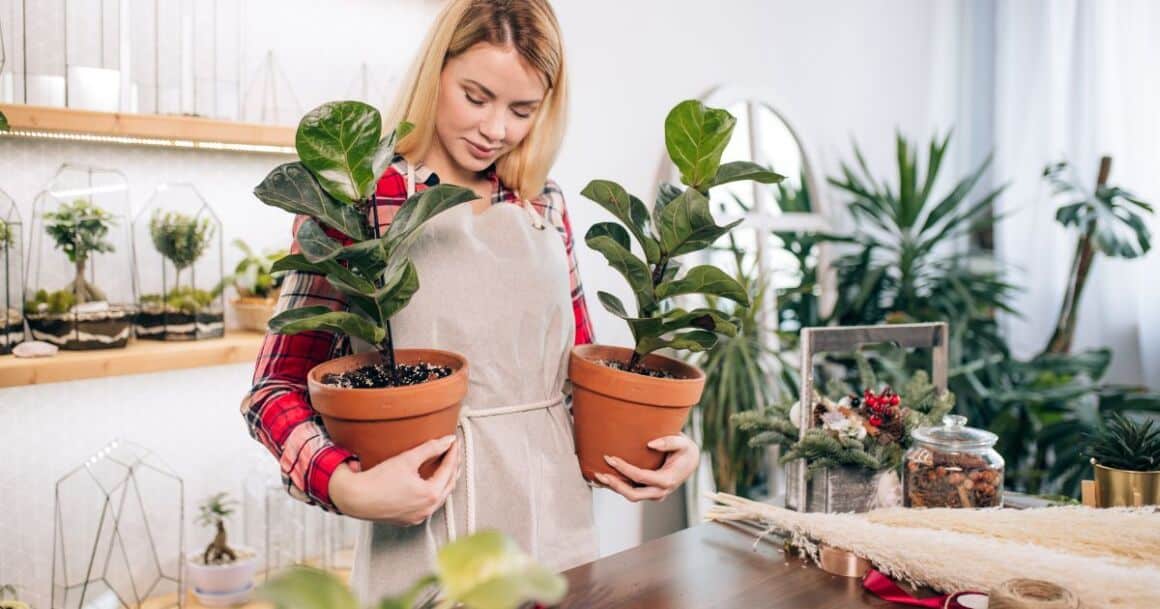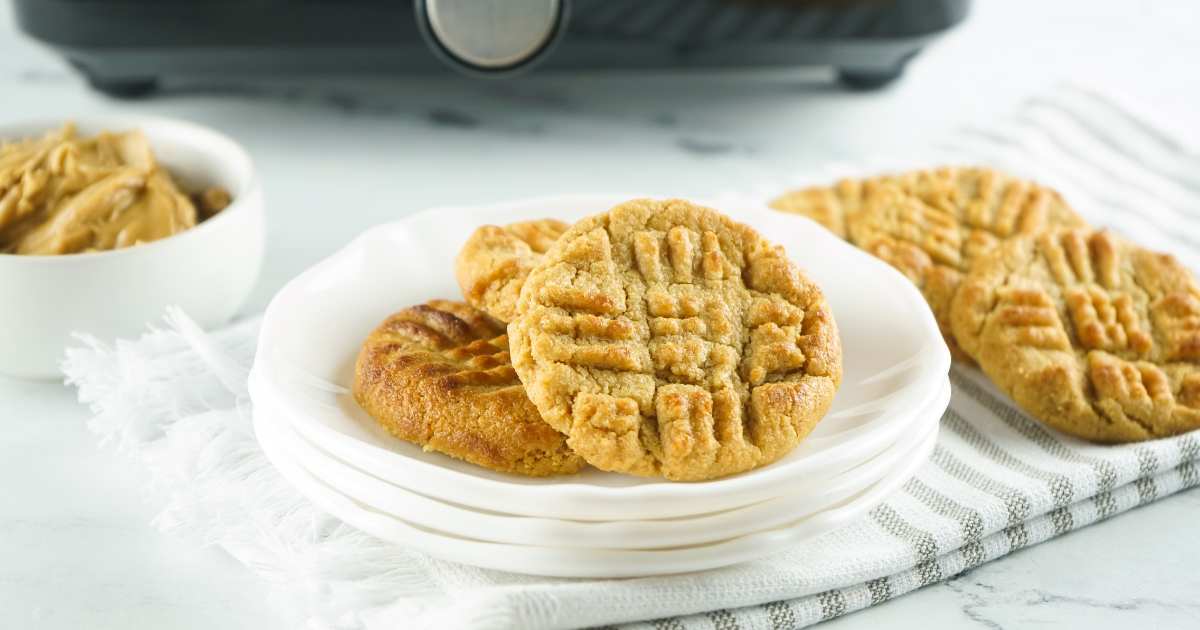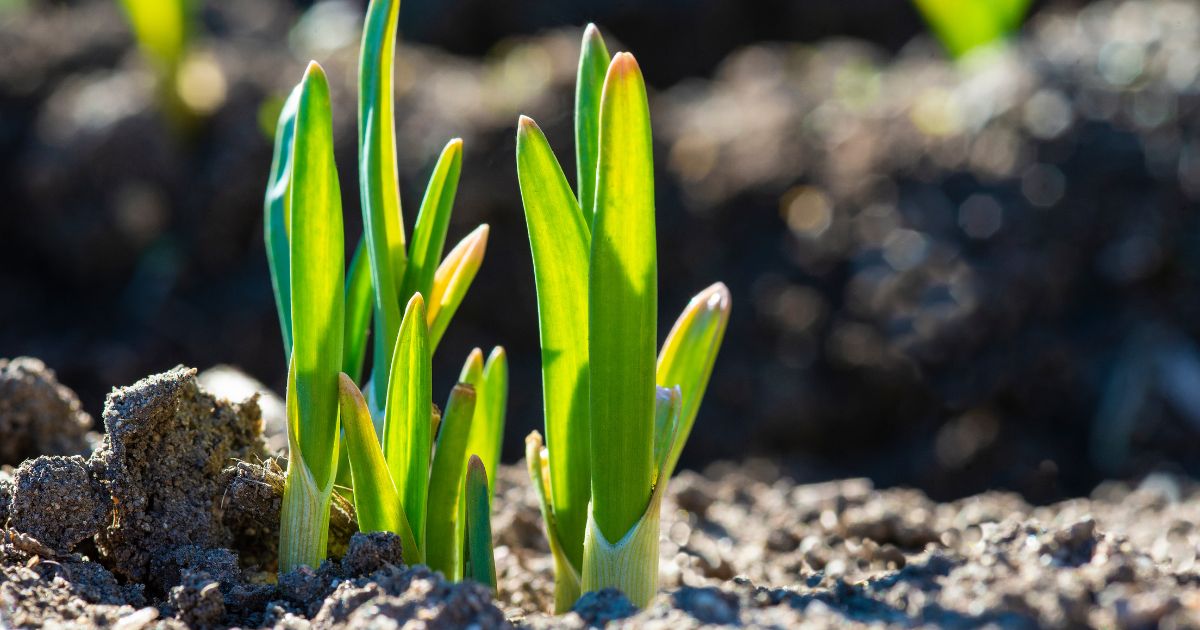How to Care for Indoor Plants: 10+ Tips For Beginners
In this article, on how to care for indoor plants (for beginners), I will share the basic houseplant care tips that I use for beautiful, thriving indoor plants in my home!
Ready to jump in? Let’s get started.

I’m a Crazy Plant Lady
My grandmother had a green thumb.
She could grow anything. She had the most beautiful gardens and lush houseplants of anyone I’ve ever known, from rose gardens to succulents.
Grandma always shared her plant know-how and gifted plant cuttings to anyone who would take them. It is so cool because many of her plants still live on today! (even though she left this earth over 25 years ago.)
All that said- my Grandmother passed on her green thumb and her love for plants of all kinds. At my latest count, I’ve got 37 plant babies in my house.
That said, over the years, I’ve learned a thing or two about how to grow beautiful houseplants, and I’m excited to share a bit of my knowledge with you to get you started. 🙂
Shop Houseplant Tools

How to Care for Indoor Plants (for Beginners)
1. Choosing the Right Houseplant
When purchasing your new indoor plant, be super picky. If they don’t look like they are perfect, then don’t bring them home.
Here are the things to look for when choosing a new houseplant:
Healthy Leaves
Look for healthy green leaves. Better yet, new growth is always a good sign. Pass on plants with brown edges or yellowing leaves.
Insects
Look for bugs and signs of bugs. I have brought plants home with tiny fungus gnats; before I knew it, all of my plants had bugs. Not good.
Plant Size
Choose a plant that will fit your space, and Then peek at the plant’s light recommendations to see if you’ve got the right amount of light available for that particular plant.
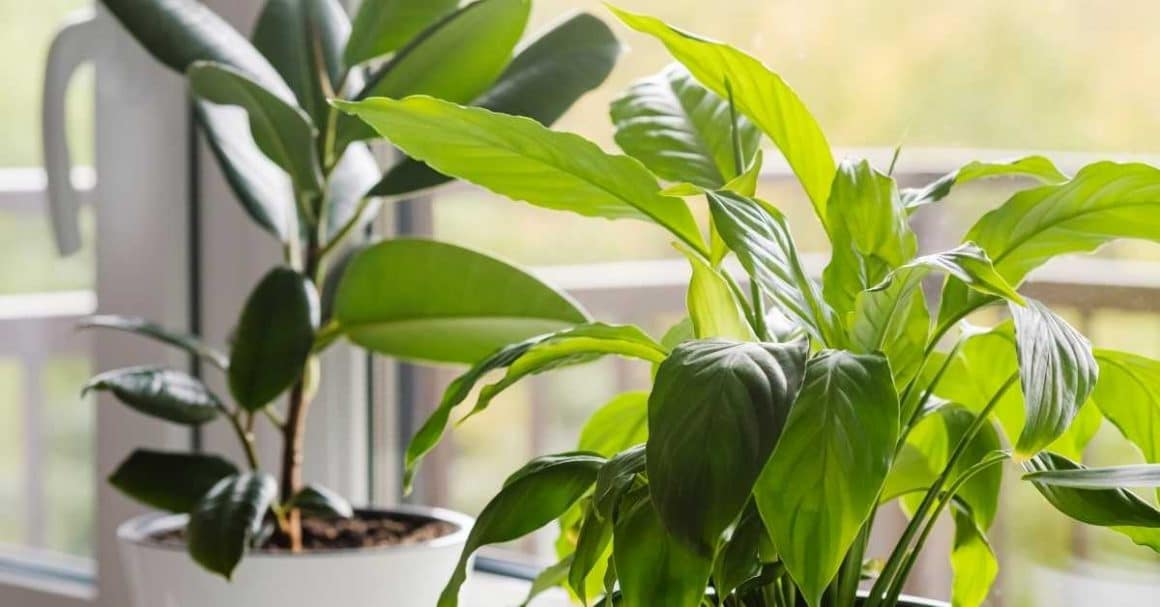
2. Give Houseplants the Right Light.
Most houseplants prefer bright, indirect sunlight.
Here are some general rules of thumb about light:
- South-facing windows give bright light.
- East/West-facing windows give moderate light.
- North-facing windows give low light.
If a plant doesn’t thrive in one spot, just move it.
You can also supplement light by adding a plant light if low light is an issue. Plant lights are inexpensive and even decorative these days.
3. Keep Houseplants Away From Drafts
I live in Arizona, and my plants DO NOT like the air conditioning! When I lived in Washington, the plants hated being close to a heater.
Make sure they are not too close to a vent.
Some plants are no more sensitive to drafts than others. My fiddle fig plants hate drafts, as does my peace lily.
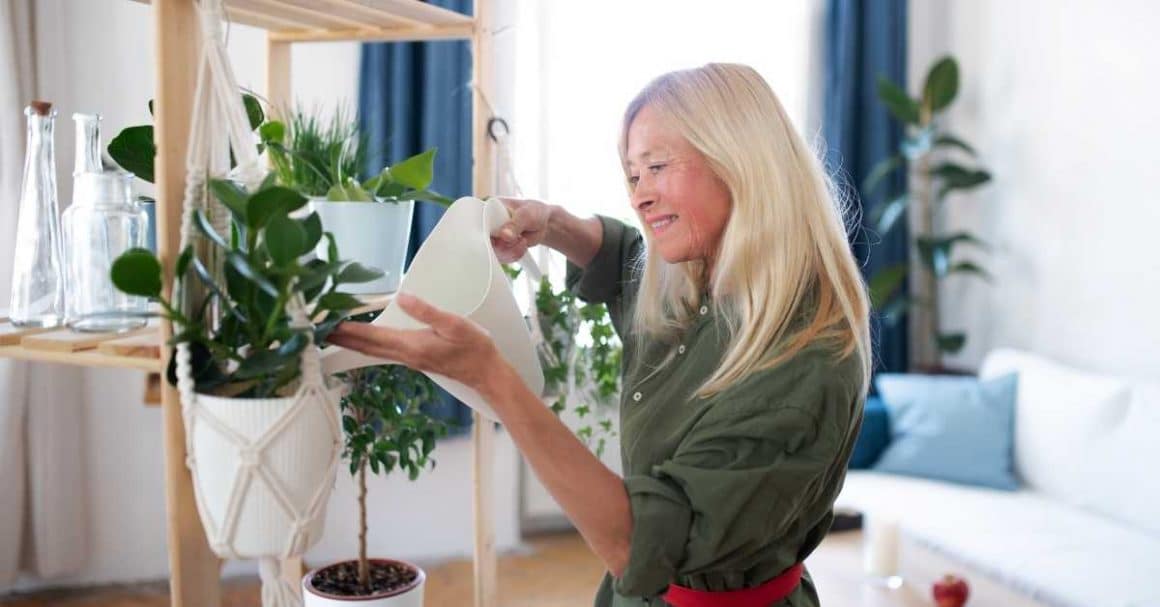
4. Get the Water Right: Tips on Watering Houseplants
Getting the water right for your houseplants is a big one.
The right amount of water is key to a healthy, happy plant, and this is where I’ve got it wrong a time or two.
When I was a newbie plant momma, I made the mistake of overwatering my plants.
The key is to follow a watering schedule. As a general rule of thumb, I water my plants once a week.
Of course, some need more water than others. But as a general rule, it works great. I put a timer on my phone. Every Monday is watering day.
Pick a day that works best for you and try to stick to it.
Before watering, I do the finger test. If the soil feels moist under the surface, I skip it for the week. It’s also a great idea to purchase a watering meter.
A water meter provides precise control over watering, preventing overwatering or underwatering, and will help you learn when a plant needs to be watered. 🙂
Remember: When all else fails, watering is better than overwatering.
Related article: The Best Water for Houseplants

5. Give Houseplants Have Good Drainage
It took me a while to determine that the plants needed proper drainage. Some of my plants were draining into a tray and then sitting in the water.
As a result, they died of root rot. Oops.
Ensure your pot has good drainage, and whatever you do, don’t plant your plant in a pot with no drainage holes.
Also, when repotting plants, add broken terracotta or gravel to the bottom of the pot before adding soil.
Related article: How to use Clay Pebbles with Houseplants
6. Fertilize your Houseplants
I feed my plants every other week.
I discovered the best plant food for the fiddle figs, which made a massive difference in my fiddle figs.
I have heard that I could do better than Miracle grow-but for me, it’s affordable, and my plants are all very healthy.
Whatever plant food you use, follow the directions and remember less is more for fertilizer.
Related: The best Fertilizers for Houseplants
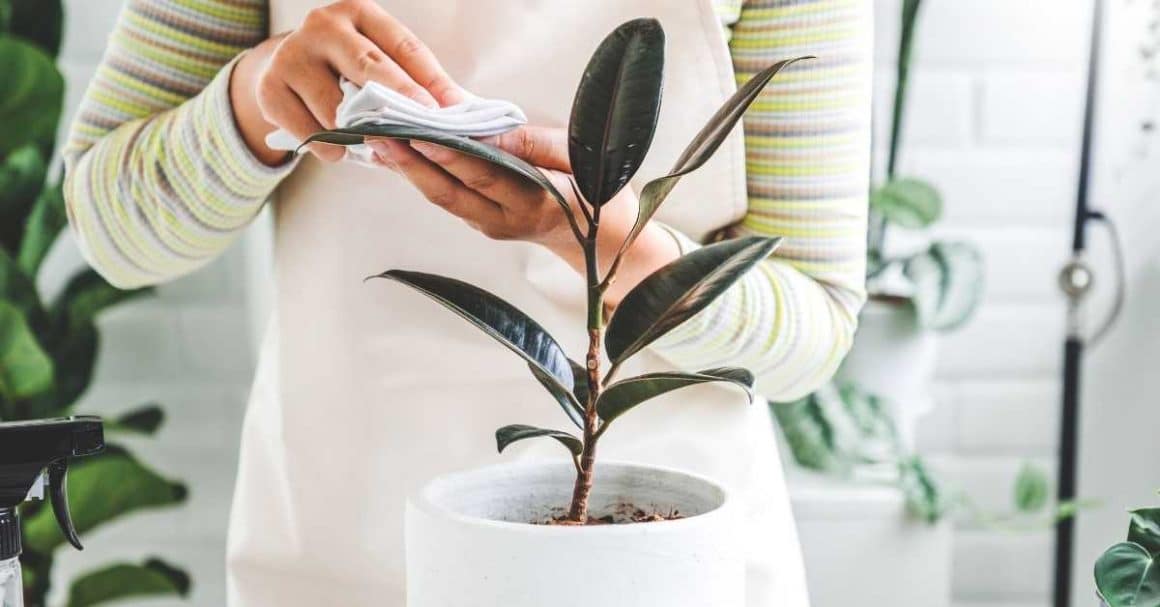
7. Clean Leaves on the Reg
My indoor plants get super dusty because we live in an area with new construction, AND…we are in the middle of the desert.
I clean the leaves on my plants a couple of times a month.
I gently wash the leaves with a soft, damp cloth and use this leaf shine, making them look so amazingly beautiful! 🙂

8. Indoor plants love humidity
Most plants love, love, love humidity! And it’s great for your skin too!
I’ve got two humidifiers running in the house at all times. (if you live in a humid climate, then you can skip this step) Since I added increased humidity to our home- my plants have flourished! It’s been a game-changer.
I got a super cool humidifier at Costco and this one on Amazon.
The one I purchased on Amazon has been running for over two years. I love these humidifiers because they are quiet and have large water tanks, so I don’t have to refill them often.
Related article: The Best Plant Humidifiers
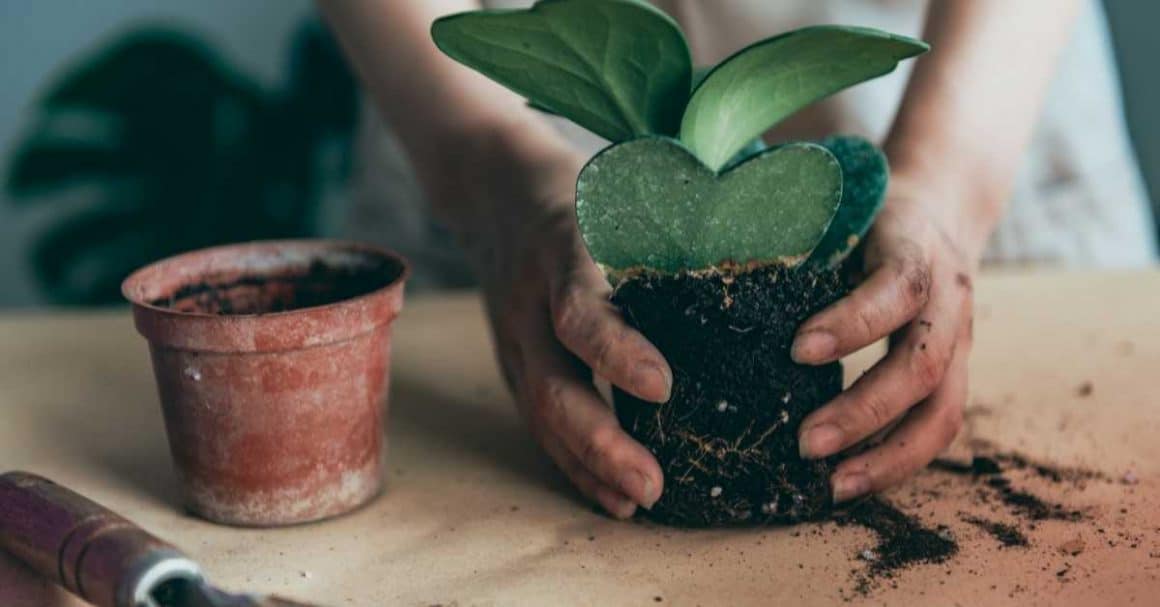
9. Re-pot your indoor plants only when necessary
There’s usually no rush to re-pot a new houseplant. Plants need time to acclimate to their new home.
Repotting them can stress them out, so putting the plant into a decorative basket or inside a decorative planter is better than transplanting them too soon.
They should do fine in the nursery pot for at least three months.
If the plant has stopped growing or become root-bound, it’s time for a new planter and fresh soil.
Keep the size no more than 3″ larger in diameter for small pots and 6″ larger in diameter for larger pots.
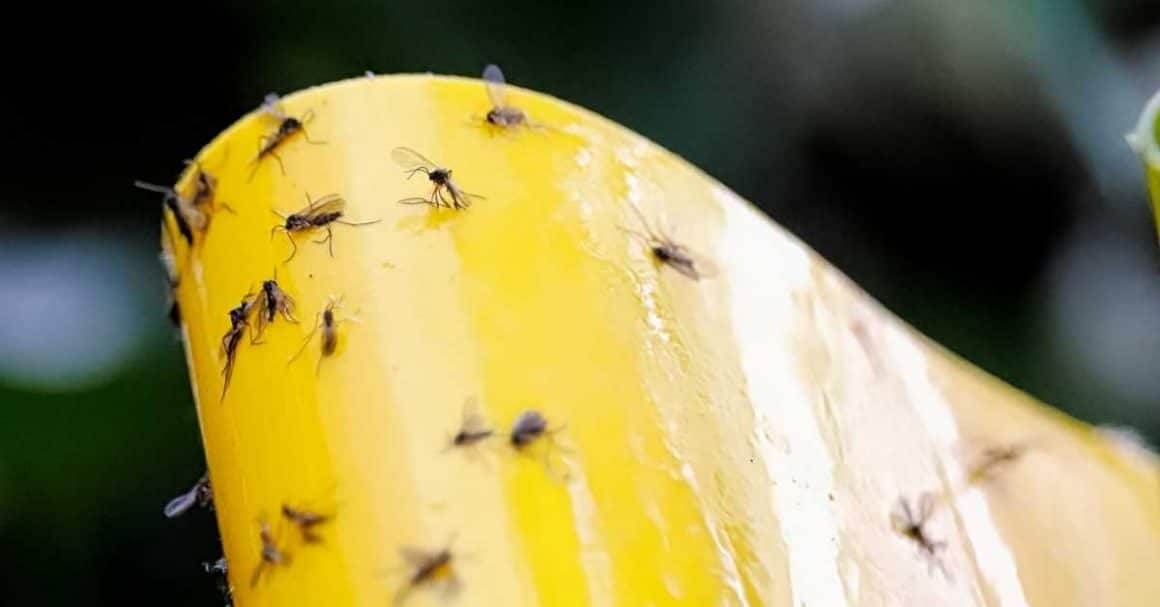
10. Keep houseplants free of Pests like Fungus Gnats!
I had a ton of trouble with fungus gnats! They were driving me crazy! Fungus gnats are neck pain and are challenging to get rid of!
Related: How to get rid of fungus gnats forever!
Shop Houseplant Tools
FAQs: Houseplant Tips for Beginners
How often should I water my houseplants?
The watering frequency depends on the type of plant and its specific needs. As a general rule, allow the top inch of soil to dry out before watering again.
What are the best indoor plants for beginners?
Consider starting with low-maintenance plants like Snake Plant, Spider Plant, Pothos, or ZZ Plant. These are resilient and thrive in various conditions.
Related: Easy and Fast-Growing Houseplants
Do houseplants need direct sunlight?
Most houseplants prefer bright, indirect sunlight. However, some can tolerate low-light conditions. Be sure to check the light requirements for each specific plant.
How do I prevent overwatering my plants?
Overwatering is a common issue. Ensure proper drainage in your pots, use well-draining soil and allow the soil to dry between waterings.
What are common signs of plant problems, and how do I address them?
Yellowing leaves, wilting, or pest infestations are common issues. Identify the problem early, adjust watering habits, and consider natural remedies or pesticides if needed.
Can I use tap water for my plants?
In most cases, tap water is suitable. However, some plants may be sensitive to chemicals in tap water. Consider using filtered or distilled water if you notice any issues.
How do I repot my houseplants?
Repot your plants when they outgrow their containers. Gently remove the plant, shake off excess soil, and place it in a larger pot with fresh, well-draining soil.
What is the best fertilizer for houseplants?
Choose a balanced, water-soluble fertilizer. Follow the recommended dosage on the packaging, and fertilize during the growing season (spring and summer).
How do I deal with bugs on houseplants?
Insecticidal soap or neem oil can help control pests. Quarantine affected plants if necessary, and regularly inspect your plants to catch issues early.
Related: The Best Neem Oil for Houseplants
Related Houseplant Articles:
- 50+ Quotes for Plant Lovers
- How to Use LECA Clay Pebbles
- The Best Plant Care Apps
- How to Propagate Plants in Water
- The Best Water for Indoor Plants
- How to Transplant a Fiddle Fig
- The Best Fertilizer for Indoor Plants
- Best Indoor Plants for Arizona
- How to Get Rid of Fungus Gnats
- 10 Houseplants for Beginners
- Guide to Dwarf Fiddle Fig Plants
- The 15 Best Herbs to Grow in Arizona
Conclusion: How to Care for Indoor Plants
Having houseplants in your home will make your space more welcoming and homey, but the plants will also help clean the air in your home! BONUS!
I hope this encourages you to go out and get yourself some plants -who knows, before you know it, you too can be a crazy plant lady like me!
Happy growing!

I’ve been keeping it real since 1963. 😊
I’m a child of God, devoted wife, proud mama and grandma, full-time creative, domestic engineer, and passionate self-care enthusiast.
I’m purpose-driven and do my best to live each day with intention—whether shopping for treasures, painting in my art studio, digging in the garden, or cooking up something yummy for my family.
I’m always up for a good chat and love collaborating with fellow creatives and brands.
Let’s connect—don’t be shy!





